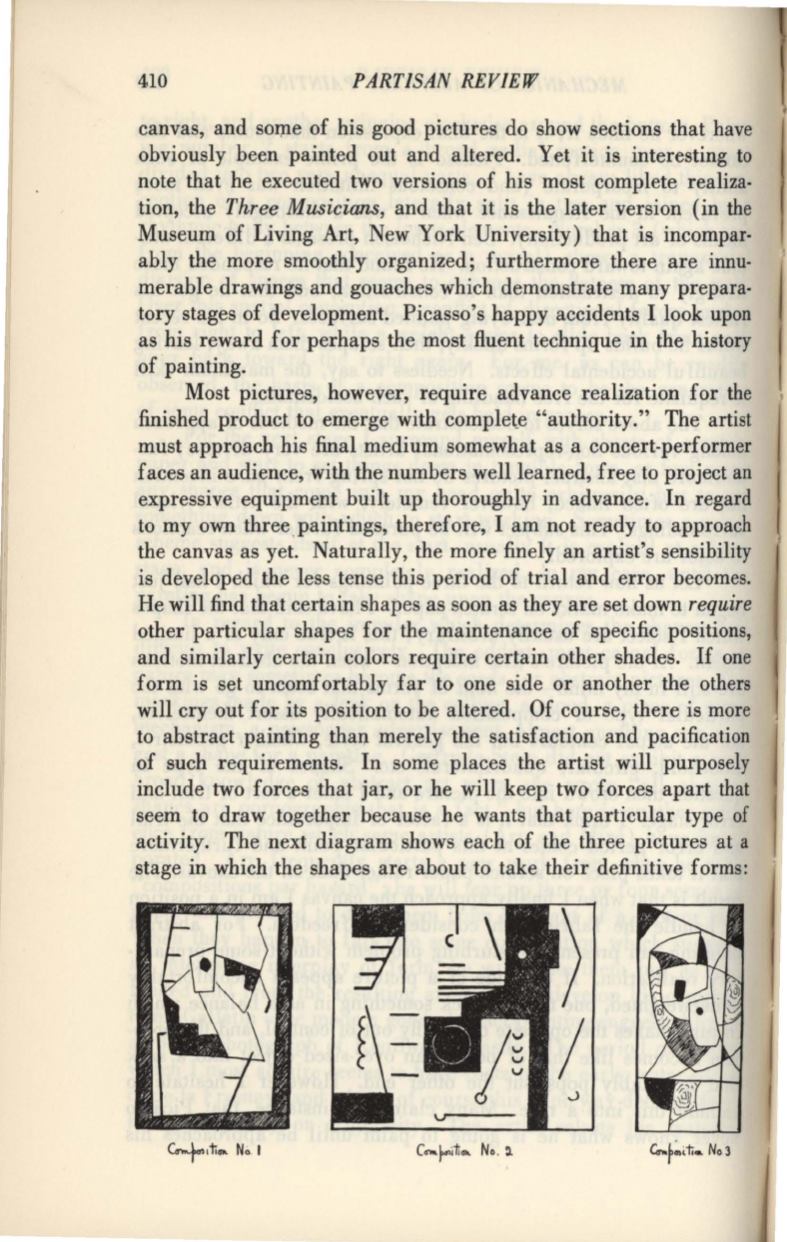
410
PARTISAN REVIEW
canvas, and so:tpe of his good pictures do show sections that have
obviously been painted out and altered. Yet it is interesting to
note that he executed two versions of his most complete realiza–
tion, the
Three Musicians,
and that it is the later version (in the
Museum of Living Art, New York University) that is incompar–
ably the more smoothly organized; furthermore there are innu–
merable drawings and gouaches which demonstrate many prepara–
tory stages of development. Picasso's happy accidents I look upon
as his reward for perhaps the most fluent technique in the history
of painting.
Most pictures, however, require advance realization for the
finished product to emerge with complete "authority." The artist
must approach his final medium somewhat as a concert-performer
faces an audience, with the numbers well learned, free to project an
expressive equipment built up thoroughly in advance. In regard
to my own threepaintings, therefore, I am not ready to approach
the canvas as yet. Naturally, the more finely an artist's sensibility
is developed the less tense this period of trial and error becomes.
He will find that certain shapes as soon as they are set down
require
other particular shapes for the maintenance of specific positions,
and similarly certain colors require certain other shades.
If
one
form is set uncomfortably far to one side or another the others
will cry out for its position to be altered. Of course, there is more
to abstract painting than merely the satisfaction and pacification
of such requirements. In some places the artist will purposely
include two forces that jar, or he will keep two forces apart that
seem to draw together because he wants that particular type of
activity. The next diagram shows each of the three pictures at a
stage in which the shapes are about to take their definitive forms:


